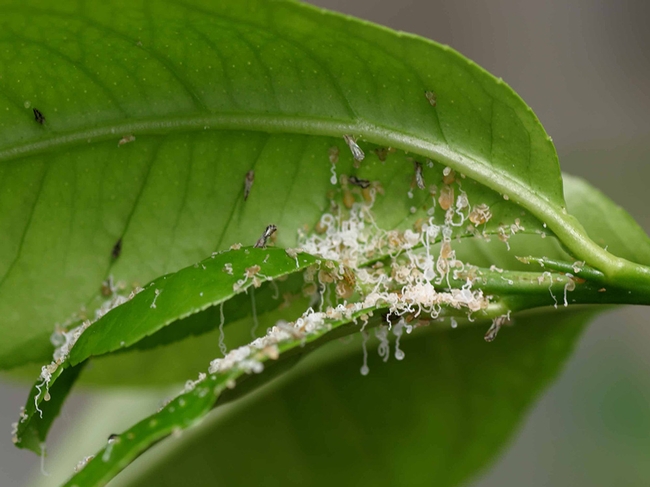A quarantine has been declared following the detection of the citrus disease Huanglongbing (HLB), or citrus greening, in a single citrus tree in an unincorporated area of San Bernardino County, near Montclair. This is the first time the plant disease has been detected in San Bernardino County. CDFA is working with the United States Department of Agriculture (USDA) and the San Bernardino County and Los Angeles County agricultural commissioners on this project.
The 93-square mile quarantine area will link up with existing quarantines in Los Angeles and Orange Counties, creating a contiguous 1,015-square-mile area. The new portion is bordered on the north by I-210; on the south by Chino Airport; on the west by Highway 57; and on the east by Ontario International Airport. HLB quarantine maps for San Bernardino and Los Angeles counties are available online at: cdfa.ca.gov/plant/hlb/regulation. Please check this link for future quarantine expansions in these counties, should they occur. Quarantines are already in place for HLB in portions of Los Angeles, Orange and Riverside counties.
The quarantine prohibits the movement of all citrus nursery stock or plant parts out of the quarantine area. Provisions exist to allow the movement of commercially cleaned and packed citrus fruit. Fruit that is not commercially cleaned and packed, including residential citrus, such as oranges, lemons, grapefruits, and kumquats, must not be moved from the property on which it is grown, although it may be processed and/or consumed on the premises.
Residents are urged to take several steps to help protect citrus trees:
- Do not move citrus plants, leaves, or foliage into or out of the quarantine area or across state or international borders. Keep it local.
- Cooperate with agricultural officials placing traps, inspecting trees, and treating for the pest.
- If you no longer wish to care for your citrus tree, consider removing it so it does not become a host to the pest and disease.
HLB is a bacterial disease that affects the vascular system of citrus trees and plants. It does not pose a threat to humans or animals. The Asian citrus psyllid can spread the bacteria as the pest feeds on citrus trees and plants. Once a tree is infected, there is no cure; the tree will produce bitter and misshaped fruit and die within a few years.
CDFA staff have scheduled removal of the infected tree and are in the midst of a treatment program for citrus trees to knock down Asian citrus psyllid infestations within 400 meters of the find site. By taking this action, a critical reservoir of the disease and its vectors will be removed, which is essential to protect surrounding citrus from this deadly disease.
CDFA, in partnership with the USDA, local county agricultural commissioners, and the citrus industry, continues to pursue a strategy of controlling the spread of the Asian citrus psyllids while researchers work to find a cure for the disease.
Author - Associate Director for Urban & Community IPM/ Area Urban IPM Advisor
Attached Images:
